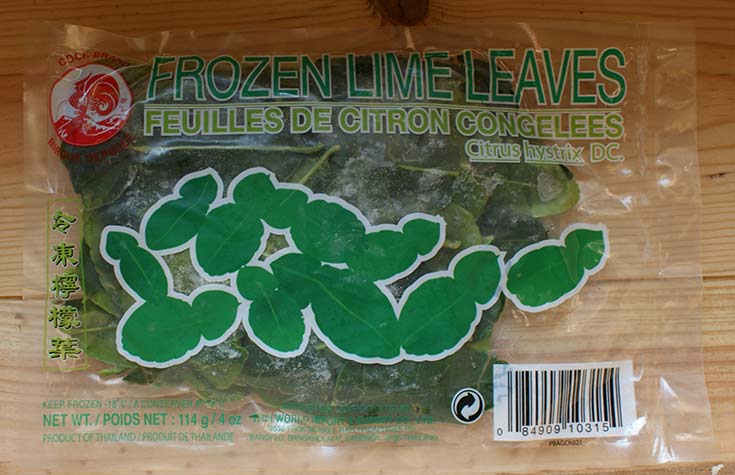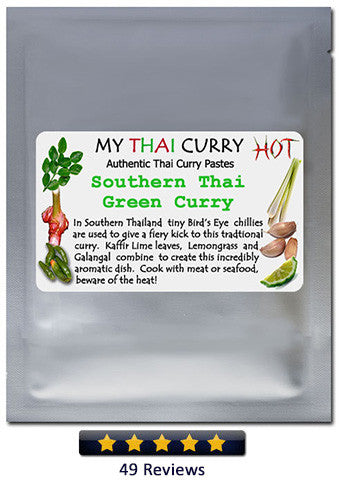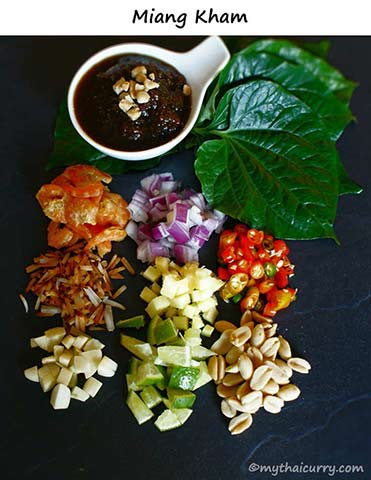Where to buy Kaffir lime leaves or Thai holy Basil in the UK?
October 14, 2015
5 Comments

I often receive emails asking the above question, or notice people searching on the website for these items. Not only can there be a problem in buying either of these, there also seems to be some confusion about how they are used in Thai cooking. I hope that I will be able to answer a few of these questions here.
Kaffir lime leaves.Fresh kaffir lime leaves are an essential ingredient in Thai cooking. However, obtaining them in the UK or the EU is far from easy. (Edit. Aug 2016. Getting easier, I've noticed that M&S now seem to have them year round.)The reason for this is that they harbour a pest that the authorities are keen to prevent becoming established here. The same applies in the US. For that reason, all imports of kaffir lime leaves have to be frozen. The kaffir lime tree requires warm temperatures and lots of light for it to grow successfully, not something we have a lot of in the UK. As a Thai living here, I know exactly how a kaffir lime tree feels! There are some EU growers of kaffir limes, I’m fortunate enough to get most of the kaffir lime leaves I use in the My Thai Curry pastes from a grower in Spain. However, for most people just requiring a few lime leaves to flavour a Tom Yum soup for example this is not a practical option. Although fresh kaffir lime leaves have been available, in Sainsbury’s and Waitrose in the past, the supply always seems to be erratic and even then, I would suspect, only in certain parts of the country. Currently Marks & Spencer have fresh lime leaves available, at least in their Simply Food stores, once again though they may not be on sale nationwide. These are grown indoors under light in the UK.

Frozen lime leaves are readily available in Asian supermarkets and if you are lucky enough to live near a Chinatown then you won’t have any problem.

Are they as good as fresh lime leaves? No, but far superior to the dried lime leaves that supermarkets do stock. These are simply just not worth buying. Don’t waste your money, they have no place in Thai cooking.
Another question I’m often asked is if there is a substitute for kaffir lime leaves. Well you could certainly use the zest of a fresh kaffir lime like the ones you can see in the picture below. My daughter bought me these back from a recent trip to Thailand, unlike the leaves, the whole limes can be imported, and you can sometimes spot them in Asian stores. And I do mean “sometimes”, not cheap either, those in the picture will cost about £60 if it bought in the UK.

Aside from the zest, there are no substitutes for kaffir lime leaves. This brings me to an annoying point on the subject; cookery writers! I have lost count of the amount of times I have read in a recipe that if you cannot get kaffir lime leaves you can substitute the juice of a lime. No, you cannot! Think about it for a moment; in Thai cuisine we use lime leaves for their aroma. We are not using them as a souring agent, which is essentially, what limejuice does. Lime juice will not give us the aroma we seek from kaffir lime leaves. I think a bag of frozen lime leaves kept in the freezer is by far the best option for most people. Certainly if you look through the website recipes, you will see that I often use them as a garnish, cheap to buy and a bag will last the average cook a long time.
 
|
Thai Holy Basil
This is another ingredient difficult to obtain in the UK. It is the essential ingredient in Pad Kaprow, a stir-fry dish that can be made with beef, chicken or pork. Whatever meat it is cooked with, the star of the show is undoubtedly the herb itself, Thai holy Basil (ใบกะเพรา) or Bai Kaprow. To my mind, Pad Kaprow has much more claim to being Thailand’s national dish than can Pad Thai.
I don’t think I’ve ever been in a Thai restaurant in the UK where Pad Kaprow was not on the menu. Sadly, I don’t think I’ve ever been in a Thai restaurant where what they are serving can legitimately claim to be called Pad Kaprow. In fact, if I ask whether the dish is cooked with Thai holy Basil, I normally end up with a somewhat embarrassed smile and the confession that they use Thai Sweet Basil instead. Understandable in view of the fact that it can be next to impossible to obtain the correct herb, but like many Thais I do think they should rename the dish.
So why is it possible for Thai restaurants to obtain Thai Sweet Basil but not Thai Holy Basil? The reasons are somewhat similar to the problems with kaffir lime leaves, but to use a phrase that many visitors to Thailand will be familiar with, “it’s same same but different”.
The import of fresh kaffir lime leaves to the EU is banned because of pests.
The import of fresh Thai holy basil leaves to the EU is not banned because of pests. The Thai government bans the export of Thai holy Basil to the EU because of pests. Confused? Bear with me! The EU operates a kind of penalty system in which countries exporting foodstuffs to the EU must be careful not to amass too many “strikes” before facing bans or financial penalties. This operates over a 12-month period. The EU is a massive export market for Thailand, particularly for foodstuffs like chicken and prawns. The value of the export market for fresh vegetables and herbs is peanuts in comparison. If imported herbs are found to contain pests, or the use of pesticides above certain limits, then you clock up a strike. Therefore, rather than risk the damage to their main exports of chicken and seafood, the Thai government imposes an export ban on certain items that stand the risk of falling foul of the regulations. Thai holy Basil gets clobbered! Occasionally this export ban is lifted at the start of a new 12 month period, but in my experience it is very soon reemployed
Thai Sweet Basil is more readily available within the EU because it is often grown in Spain or increasingly in Israel. (Currently available in Waitrose, grown in Israel & Ethiopia) The spicy Thai holy Basil is much less easy to grow outside of Southeast Asia (humidity?) and therefore is more difficult to obtain. I have noticed though that lately countries such as Vietnam and Cambodia are starting to export it to the EU. A consequence of this is that it is starting to become easier to obtain, particularly in Vietnamese stores. Many of these stores seem to have a once weekly delivery of fresh herbs so if you have such a store near you it could be worth finding out which day the delivery is due.
Writing this article has left me with hunger pangs for, you’ve guessed it, Pad Kaprow! Off to Chinatown now to try my luck in buying this magical herb :-)
UPDATE: See comments below for more stockists. You might want to phone ahead to check stock/delivery day.
UPDATE June 2024. I sometimes get people contacting me to say Waitrose & Sainsbury's now sell Holy Basil. They don't. They sell Thai Sweet Basil labelled as Thai Basil.
5 Responses
Leave a comment
Comments will be approved before showing up.






































deedub-sf
January 14, 2025
I was under the impression that tulsi was the same as or very similar to Thai holy basil. Are they actually completely different?
Since there are plenty of Indian groceries around, is it possible to get a relative of Thai holy basil there?
Or is the same regulatory issue in the way?
———
mythaicurry replied:
I believe it is similar but I have never been able to find it in the UK and that includes places like Brick Lane in London. Good luck with your search!